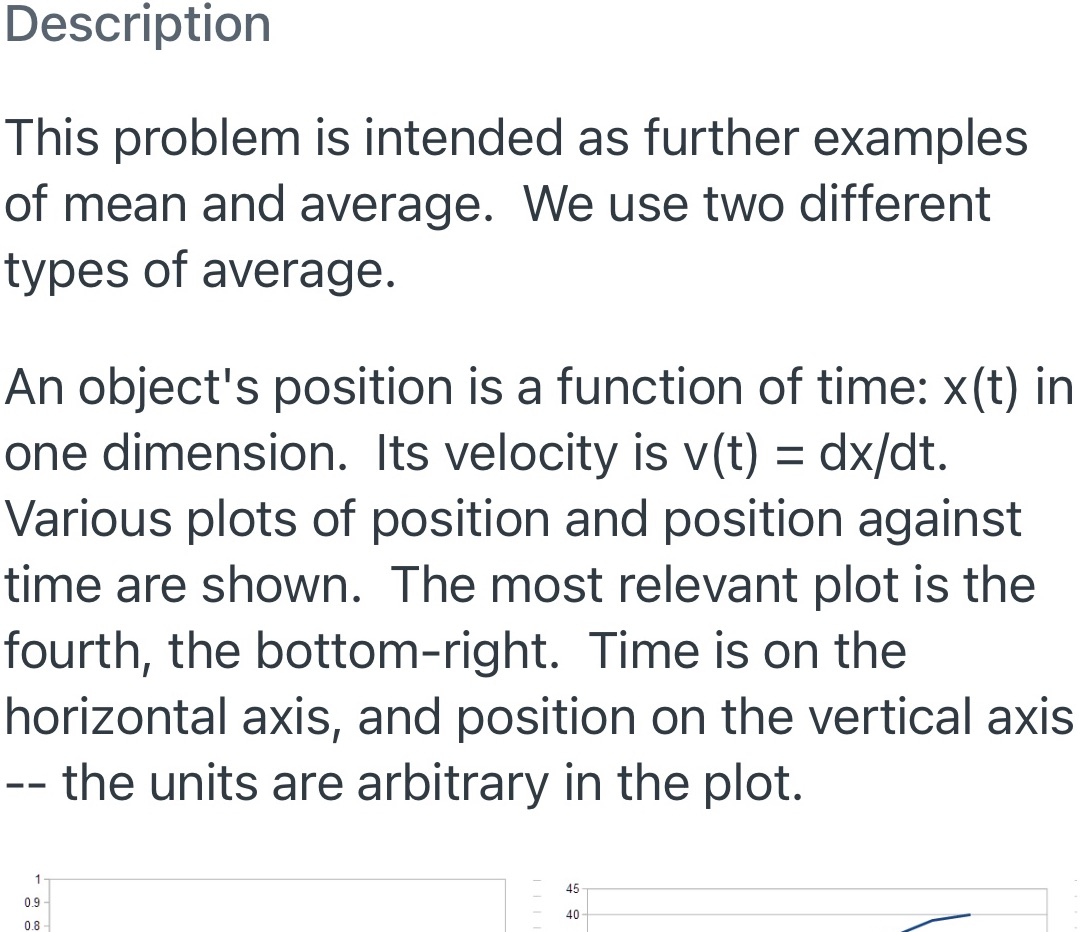Question
Inverting v(t) = dx/dt, we have the change of position between two times, to and tf:?(??)??(??)=??????(?)d?x(tf)?x(to)=?totfv(t)dtThe average velocity = [x(tf) - x(to)]/[tf - to]. We
Inverting v(t) = dx/dt, we have the change of position between two times, to and tf:?(??)??(??)=??????(?)d?x(tf)?x(to)=?totfv(t)dtThe average velocity = [x(tf) - x(to)]/[tf - to]. We also use the arithmetic mean (the usual mean). You may take the time and distance units as meter and second, for the numbers.Use this velocity function: v(t) = 7 + 4t. Calculate the mean of v(0) and v(5).Calculate the change in position, with to = 0 and tf = 5.Calculate the average velocity.Repeat calculations 1-3 with this velocity: v(t) = 11/(6-t), with to = 0 and tf = 5 still.For the first velocity function, if calculations 1 and 3 are different, try again. They should be different for the second velocity function.

Step by Step Solution
There are 3 Steps involved in it
Step: 1

Get Instant Access to Expert-Tailored Solutions
See step-by-step solutions with expert insights and AI powered tools for academic success
Step: 2

Step: 3

Ace Your Homework with AI
Get the answers you need in no time with our AI-driven, step-by-step assistance
Get Started


